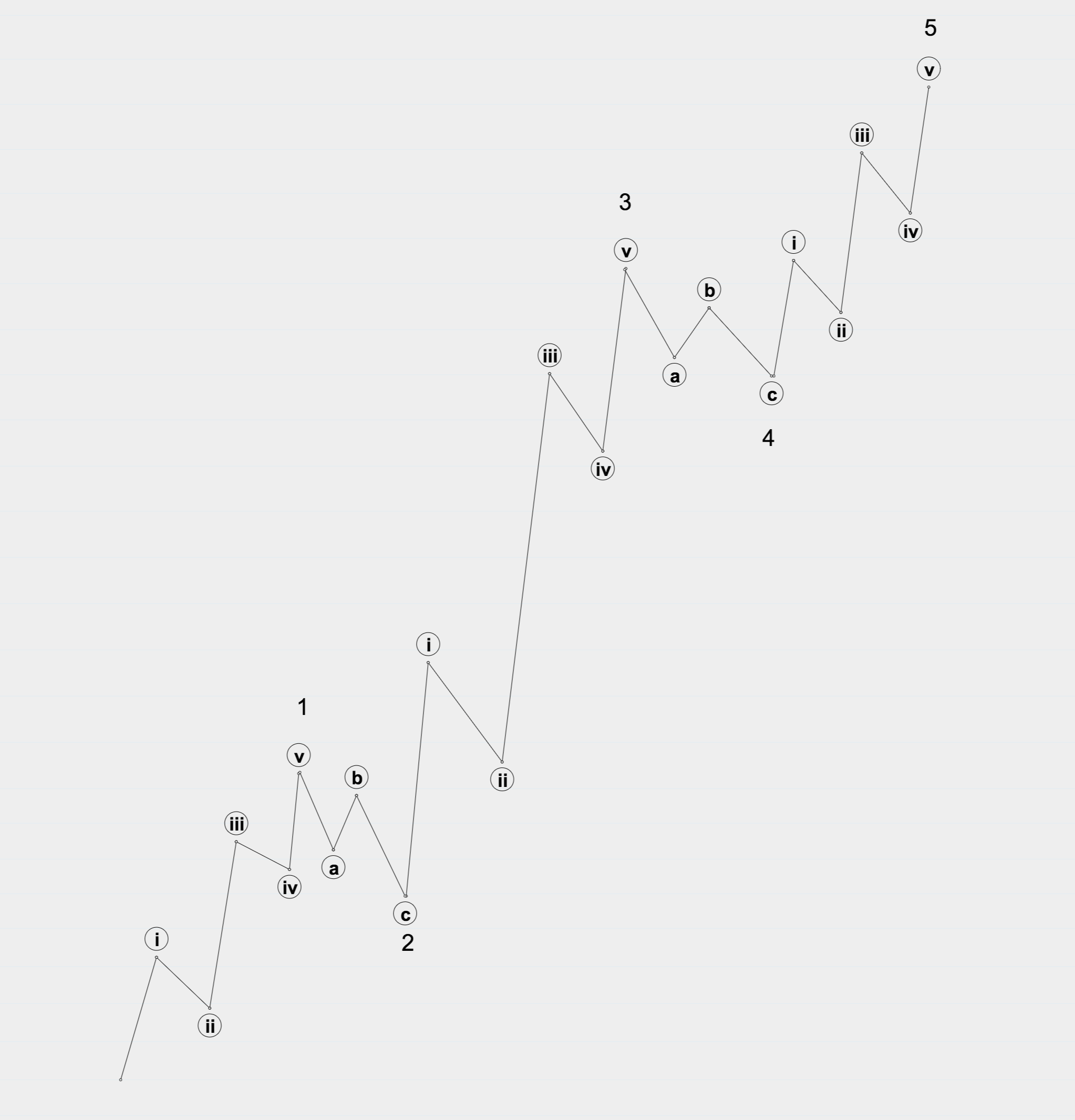Rules
- An impulse subdivides into 5 waves
- Wave 2 cannot retrace more than 100% of wave 1
- Wave 3 cannot be the shortest of the three action waves, 1,3, and 5
- Wave 3 is always an impulse
- Wave 4 does not overlap with wave 1
- Wave 2 is never a triangle

Guidelines
- Corrective waves 2 and 4 show a different correction pattern (alternation)
- Wave 2 usually retraces a big proportion of wave 1 retracement (Fibonacci 50% – 61.8%)
- If wave 2 traces more than a 78.6% correction it is likely something else
- Wave 2 develops most often into a simple pattern
- Wave 2 develops as a zig-zag or as a combination, which includes a zig-zag
- Wave 4 shows usually a complex pattern
- Wave 4 is usually shallow (Fibonacci 23.6%-38.2%) and often ends around the 4th wave of lesser degree
- If wave 4 goes beyond Fibonacci 50% it is usually not the 4th wave
- Almost always one of waves 1,3, or 5 extend
- Usually, wave 3 extends
- The middle portion of wave 3 is usually the strongest and consists of most extensions
- 161.8% and 261.8% tend to get targeted during extensions
- Non-extended waves tend to be related by equality or Fibonacci proportions
- Extended 5th waves usually equal to the sum of waves 1 and 3
- Wave 4 often corrects the entire impulse into a proper look regarding time and price
- Wave 3 is usually extended if wave 1 is a leading diagonal
- The very rare event of a truncation (or failed fifth) occurs if wave 5 fails to pass beyond the end of wave 3
- Wave 5 is unlikely to be a diagonal if wave 3 is not extended
- Truncated 5th waves, as well as 5th wave extensions, usually cause substantial reversals

